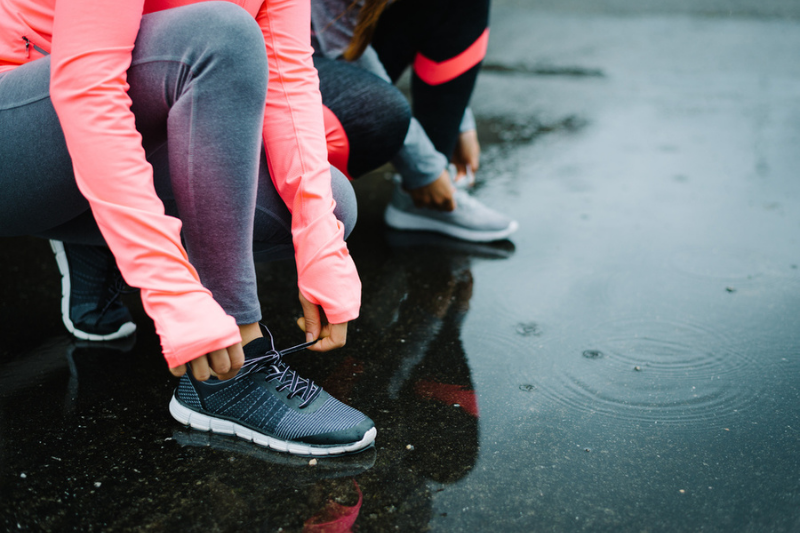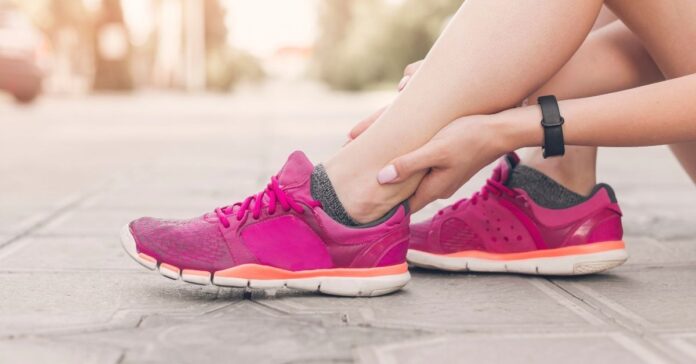Under pronation is one of the most common foot conditions that people suffer from. It can be caused by several different factors, including excessive weight gain and too much running on hard surfaces. The best running shoes for underpronation offer support for your arch and cushioning for your heel. They should also have a flat or low-profile midsole to provide stability while allowing your foot to move more naturally when you run.
Arch Support
While having good arch support in any running shoe is important, it’s especially important for underpronators. Arch support helps keep your foot in a neutral position and prevents overpronation. If you don’t have enough arch support in your shoes, this can lead to pain and injury in the long run.
You can achieve arch support with orthotics or a shoe with an elevated arch built into its design–this will keep your feet from rolling inward during movement.
A good pair of running shoes is important for runners, especially underpronators. The right shoes can help prevent injury and improve your overall performance.
The Best Running Shoes For Underpronation And High Arches
The best running shoes for underpronation and high arches support the arches and lower legs. The best way to do this is by using a higher arch support, which will keep your foot in a neutral position when you run. In addition, you must find running shoes with wide-toe boxes so that your toes don’t get squished together or jammed into the front of the shoe while running.
The best running shoes are generally made with materials that absorb shock and provide cushioning. This can be done using a midsole foam or gel, giving the shoe more comfort and flexibility.
Motion Control
If you’re an underpronator, motion-control shoes are a great choice for you. These running shoes have a stiffer midsole and more support than neutral or stability shoes. This means they’re designed to help prevent overpronation–a common issue among runners with high arches or flat feet. Motion-control shoes tend to be heavier than other models, but they can still be comfortable if you choose wisely (we’ll get into that later).
Motion control shoes also come in different levels of support:
- Low-to-moderate: If you’re just starting with running and want something basic that won’t break the bank yet still offers some guidance for your stride pattern, these are perfect for beginners who need extra support but don’t want anything too bulky on their feet at first glance!
- High: These offer plenty of stability without being clunky like other options today; a great choice if your ankles roll too much when walking around town during off hours from work/school etc.
 A Cushioned Heel In The Best Running Shoes For Underpronation Womens
A Cushioned Heel In The Best Running Shoes For Underpronation Womens
The heel in the best running shoes for underpronation womens should be cushioned to absorb shock and distribute your weight evenly. Your foot will naturally move forward in a run, but if you have an extra-wide or high heel, it could cause injury and pain while running. The ideal running shoe has a low-profile heel that allows for natural foot movement during exercise.
The ideal running shoe will have a wide fit but not too wide. It should be snug enough that your foot won’t move around inside the shoe but not so tight that it causes pain or discomfort. A good way to tell if your shoes are too narrow is if you can pinch more than one finger between your toes and the front of the shoe. If this happens, try going up a half-size or full-size to ensure you have enough room for movement without sacrificing comfort.
Flat Or Low-Profile Midsole
The midsole is part of the shoe that provides cushioning and shock absorption. This section should be flat or low-profile to reduce pronation. The ideal midsole will be lightweight, flexible and durable — typically made from EVA or another material like rubber.
Stable And The Best Shoes For Underpronation
You’ve probably heard the term “stability” before. It refers to a shoe’s ability to support pronation control, which helps prevent overpronation (or “rolling in”). Underpronation is when your foot rolls outwards as it hits the ground. Pronation is necessary for a healthy running stride and helps distribute impact evenly across all of your joints, but if you have too much of it- or none- you can experience pain in certain parts of your lower body.
The best shoes for underpronation are designed specifically for runners with under pronation or flat feet who need extra support during their workout routine.
Shoes With Dual-Density Midsoles Tend To Provide More Stability Than Single-Density Ones.
Dual-density midsoles are more stable than single-density midsoles. Dual-density midsoles have a hard outer layer and a soft inner layer, while single-density midsoles only have one foam layer. The extra support offered by dual densities can help reduce the risk of underpronation, especially if your foot has flat arches that tend to flatten out when you run. However, dual-density shoes are usually more expensive than their single-density counterparts because they require more material to achieve this stability.
Stylish And The Best Shoes For Underpronation Womens
The best shoes for underpronation womens are stylish and eye-catching. Women’s running shoes with underpronation will have a cushioned heel and a flat or low-profile midsole to prevent overpronation. Women’s running shoes with stability can be used for mild to moderate overpronation, but they may not provide enough support for severe cases.
Women who run in motion-control shoes need a rigid sole that helps keep their feet from rolling too far inward when they land on their heels. They also require more cushioning than most other runners because they’re more likely to experience pain in their ankles and knees due to the extra stress on joints caused by excessive pronation.
The Shoe’s Upper Should Be Soft, Flexible, And Supportive Enough To Keep Your Foot Secure While Running.
The upper should be soft, flexible, and supportive enough to keep your foot snugly in place while running. The upper should also be breathable and lightweight to keep your feet cool and comfortable.
The shoe’s midsole, that’s best for underpronation, has a medium level of cushioning that helps absorb shock during the impact phases of the running cycle. This type of cushioning provides support without sacrificing flexibility or lightness in weight.
Features Of The Best Walking Shoes For Underpronation
If you’re looking for a shoe with arch support, look for shoes labelled as having “posture support”. This means that the shoe has a high midsole arch, which helps maintain proper posture. The best way to find out if your running shoes have this feature is by reading reviews from other runners who have worn them.
Another feature that will help you maintain good posture while walking or running is motion control technology in one of their best walking shoes for underpronation. Motion control shoes keep pronation problems under control while providing stability and support throughout the foot.
Conclusion
Good running shoes for underpronation have a lot of cushioning in the midsole. This will help absorb impact when you land on your heel and provide more stability to your foot.
Related Websites
Articles on Blogshunt
Articles on Blogseu
Articles on Blogspeoples
Articles on Thebigblogtheory
Articles on Allcityforums

